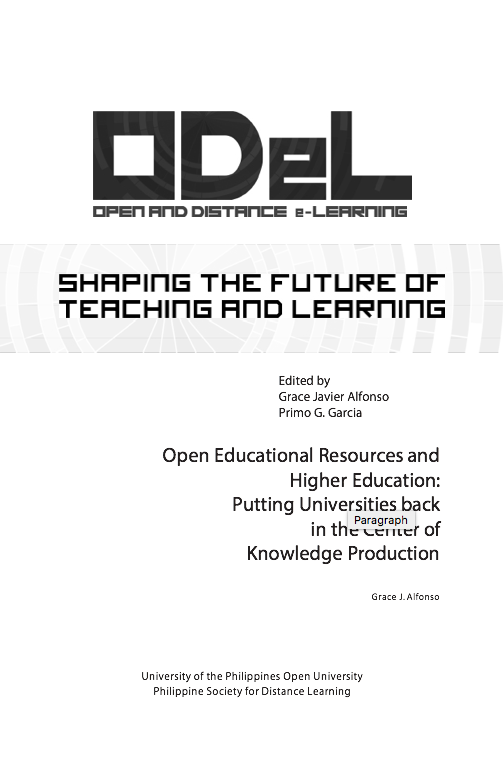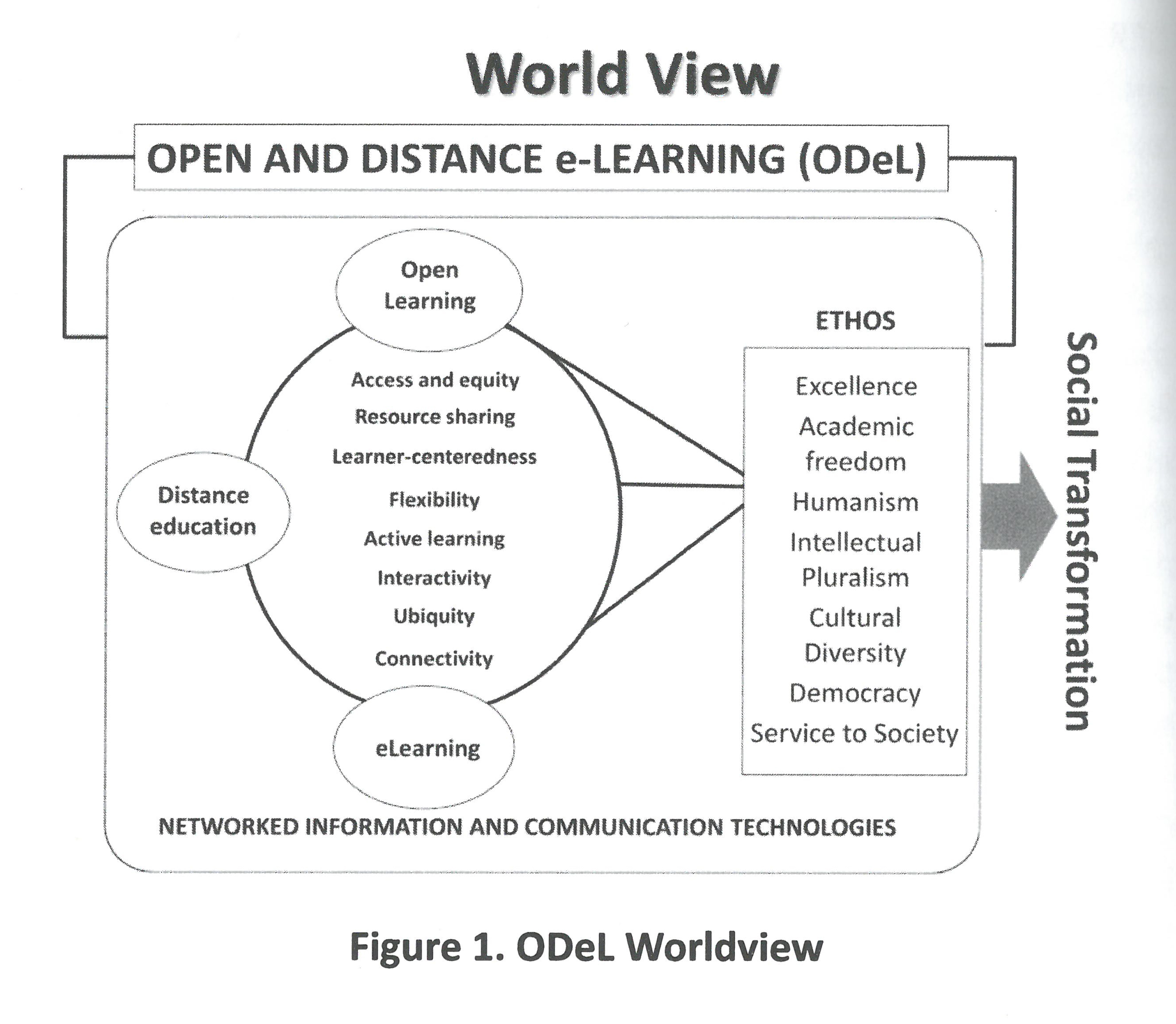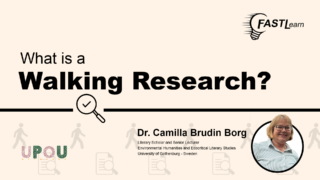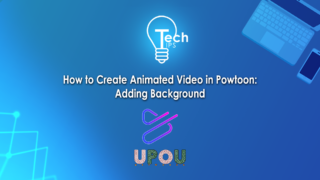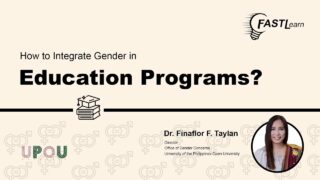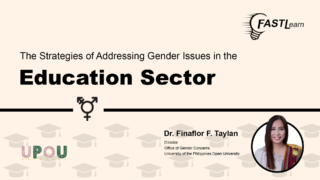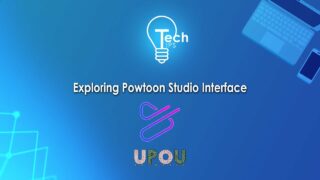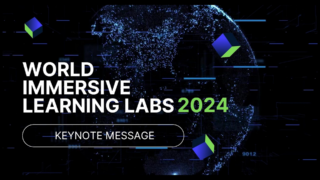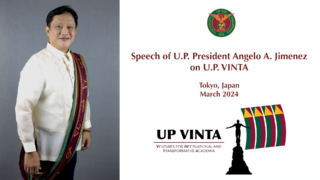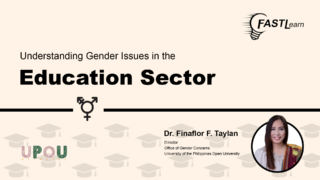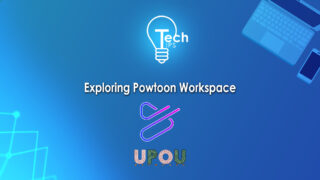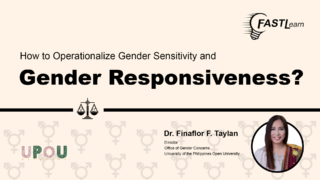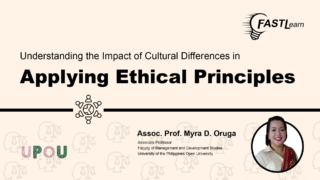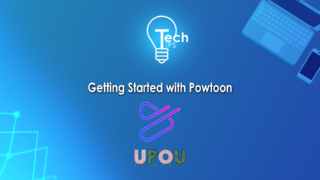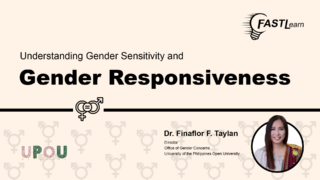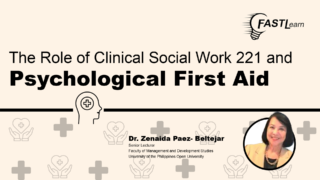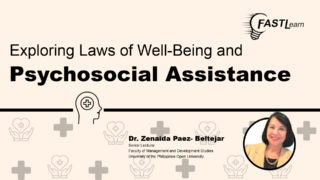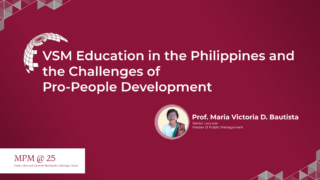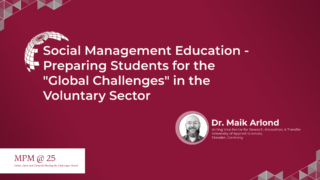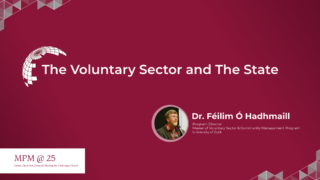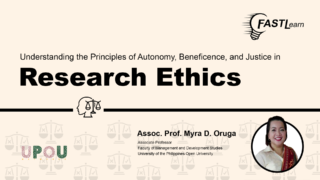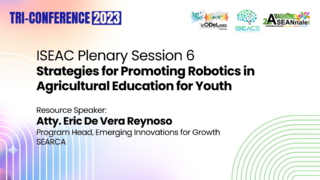In 2011, the UP Open University (UPOU) embarked on the production of a community television program that aims to highlight science and technology issues and showcase the research and technologies produced by research and development (R&D) institutions based in the university town of Los Banos in Laguna, Philippines. The UPOU offers mostly graduate programs through open and distance e-learning.
The one-hour magazine show is called “Maki-Makiling”, named after the beautiful mountain that stands above the university town. Among its segments are a discussion of science and technology issues by local experts and citizens, feature stories on technologies developed by the R&D agencies, trivia, and other information about the town’s history, culture, and tourism. It is part educational and part entertainment. To make it more accessible to more people, the show was produced in Filipino.
The local show ran for one season. It was produced through the efforts of volunteers from the UP Open University and the R&D agencies. I acted as the show’s director with technical crew coming from UPOU’s Multimedia Center. The local cable operator offered to air the show thrice a week for free. It was broadcasted in several towns in the province of Laguna. UPOU is also planning to upload the show in its web-based station called UPOU Networks to make it more accessible to a wider community. While the show primarily addresses a local audience, the issues it covers—forest conservation, health, water quality, and science culture—are universal.
This initiative was initially met with doubts by some representatives from the R&D institutes. They were unsure whether there is an audience for a show on local science and technology issues. After the airing of the show’s initial episode, we were gladly surprised by the positive feedback from the local citizens.
I shared this experience because it gave me some insights on open educational resources (OER) in Asia and the digitized world.
The benefits of OER to education has long been heralded—widening access to education, promotion of lifelong learning, increased collaboration between academics, increased reputation for the participating institutions, and so on.
While we continue to reap the benefits of OER, there are some issues that I believe we must consider of we are to make OER more relevant to learners, especially in this part of the world.
The proliferation of educational resources—both proprietary and open—has been a cause for celebration as well as concern. While it has made learning more accessible to more people, its openness to all types of assertions can be problematic as well. Individual learners who do not belong to the formal education system may find the wide array of resources confusing, especially if they are confronted with opposing perspectives. As Prof. Som Naidu said, students need help with locating OERs, evaluating their quality, and applying these resources for effective learning. More than ever, our teachers need to be involved not only in the development but also delivery of these digital resources. In the era of open knowledge, however, traditional quality assurance systems are at best difficult to impose and go contrary to the participative nature of OER where teachers and learners are engaged in the co-creation of knowledge.
OER has an inherent mission to make learning available to as many people as possible. If we really want to make OER truly useable, academics need to be open to the popularization of complex scientific ideas. As it is, there is general disdain for popularization among academics. As Stephen Hilgartner noted, popularization is sometimes seen as “appropriate simplification or at worst, the distortion of science by outsiders.” Having said this, popularization— if not properly handled—can also lead to oversimplification, if not misrepresentation.
The digital nature of OER has made it readily accessible, reusable, and interactive. However, it has also raised the difficulty of pinning down authorship in a multimedia environment. When French artist Marcel Duchamp put a urinal in a museum to make a point about the nature of art, the artistic community began questioning the nature authorship. Who is the author in this case—is it maker of the urinal or the artist who put it in the museum and called it art? The same dilemma now faces multimedia resources. When people do mash-ups of digital resources, to whom does the authorship rightfully belong?
Lastly, OER has done a lot in giving much latitude to our teachers and learners in both content, type, and medium. However, more work needs to be done to increase resources suited to the Asian context. As Ilkka Tuomi argued, the Western Platonic or “object” view of resources may not fit with the primacy of the “flow” in Asian philosophy. Moreover, Asian academics also need to populate the web with their own narratives and discourses and in their own languages. If indeed language constructs reality, our reality may change depending on the language we use to make sense of our world. A more active contribution from Asian academics in OER may perhaps help in addressing exoticism and stereotyping of Asian people and societies.
By virtue of their name alone, universities cannot afford not to be involved in OER. In this case, the growth of OER will likely be shaped by the context in which universities and other educational institutions are situated. The confluence of these contextual factors shall define what kind of OERs will prevail and how it will affect our educational system in particular and societies as a whole. In the midst of these issues and concerns, what roles can universities play? How do academics hold on to their mission in the midst of these changes?
Despite claims by some critics about the impending death of the University as we know it, I believe that the long-term success and relevance of OER is tied up with the future of universities that support it. For OER to flourish and to be truly enriching, we need to look at OER within the context of the “universitas”—the larger community of scholars, the state that has given us the mandate to operate, as well as the citizenry from which we draw support. By going back to the concept of the universitas, we can better appreciate what education is—a social contract.
At the core of the universities’ social contract is its role in social transformation. Universities have helped shape society not only by producing competent professionals but also by nurturing innovative ideas, facilitating discourse on important social issues, and developing technologies that people can use. Universities have pursued knowledge beyond the utilitarian needs of our professions and industries. They have also helped spur paradigm shifts, social movements, and social transformation. Universities are able to do this because they encourage the free exchange of ideas, thereby allowing its community of scholars to think critically, creatively, and collegially.
OERs can be tapped to develop learners who can think critically, analyze situation from different angles, tolerate other ideas, and propose creative solutions. From my observation though, effective course design and delivery are not enough to realize all this potential. For such learning to be authentic and therefore achievable, learners and teachers alike need to know and feel that they are a part of a community of learners. While technical knowledge is a must, our citizens need to know that they have ready access to a more holistic learning experience that goes beyond the how to’s of things. I believe that e-learners and teachers alike need to imbibe values that have made the universitas the cradle of social transformation—academic freedom, humanism, intellectual pluralism, cultural diversity, academic excellence, democracy, and service to society.
On the other hand, OER is underpinned by values like freedom, inclusivity, access, resource sharing, learner-centeredness, flexibility, and reflection.
These values are inherent among educators. In addition, they are compatible if not supportive of the values that define the universitas—excellence, academic freedom, humanism, intellectual pluralism, democracy, and service to society. These ethos create the spirit of the university as we all recognize. Together, all these elements—embedded and facilitated by networked information and communication technologies (ICTs)—can help bring about social transformation (Figure 1).
Let me just say that I am not the first one to espouse these values. Many educational institutions have actually practiced these values in one form or another. What I am presenting is not a normative framework but more of an expression of values, a worldview, a construction of how open knowledge can be enacted in the context of the “universitas.” It is a worldview shaped by my experiences as an academic, a university administrator, a citizen, and a lifelong learner.
Figure 1. ODeL Worldview
This worldview has implications for OER and the way we handle some of our academic and administrative matters in the university.
First is the issue of plurality of ideas. The post 9/11 scenario has shown us that the world needs more people who have greater understanding of the complexities of the world around them, a high level of tolerance for differences, and a more open mind to transformation. These are the same values that define the universitas. For us working in OER, this requires designing resources that not only encourages participation but also presents a range of ideas and perspectives.
The OER movement has done a great deal in democratizing learning materials. However, the developing world has been more of a consumer rather than producer of content. To create a truly global perspective, we in Asia and the Third World must find means to design, construct, and produce our information, our stories, our experiences, our interpretations, and our course materials and claim our voices and spaces in the vast limitless Web. There is a need to create our own materials the way we want to create them and proliferate the web for the world to see. Only then can we talk about authentic contribution.
Related to this issue is the production of scholarly texts in a networked world. OER has been accused of contributing to confusion. If we really want OERs to be truly reliable, academics need to be active in producing propagating OERs that can be accessed by people across the globe. We in the academia should maximize the potentials of multimedia as research—both in terms of conduct and dissemination. While printed academic journals—which can be digital too—shall remain the primary mode for disseminating empirical work among academic scholars, multimedia offers a great opportunity to disseminate scientific knowledge to an audience that is becoming more accustomed to the grammars of the audio- visual language.
Corollary to this is the need for collaboration in the production of OERs. In a network society, academics must partner not only with other academics but also with communities of learners in the production of OERs. There should be more East-West, East-East, South-South, and North-South collaboration to ensure that OERs are not only relevant but, more importantly, present a balanced view of the world. In this way, we can minimize the problems of racism, caricature portrayals, exoticism, sexism, and fundamentalism that have been plaguing our world.
Academics should be more open to working with learners and other communities of practice in the development of OERs. This applies not only in OER per se but also in the way we conduct our research. This goes beyond the issue of popularization. It is more about understanding their perspectives and worldview to make OERs more sensible to their lived experiences. We should maintain our rigorous research methods even as we explore more accessible ways of disseminating research results. In this way, we can share the products of our research as OER in a relevant manner to a wider audience.
If academics fail to see the opportunities of working with learners and other stakeholders in the educational system, commercial providers would fill the void. I have no problem with private sector participation in education. However, universities should still play a leadership role in the OER movement. The juggernaut of consumerism has its dangers and we should remain vigilant about it.
Third is the non-linearity of the medium. Traditional cultures like those in Asia has a long oral tradition. According to Thomas J. Farrell’s commentary on Walter Ong’s work on orality and second orality, orality is participatory while print is objectively distanced. In orality, the author is dubbed as the performer, however, the listener is part of the performance and therefore is likewise the author. The online environment in which most OERs are embedded is capable of reconfiguring a space for second orality through its use of hypertexts, hypermedia, and hypermultimedia. Hypertext brings back the non-linear, non-hierarchical organization of information of primary orality. The digital text has given the ordinary people voices, thus expanding the democratic space.
Indeed, e-learning technology is characterized by that unending cycle of conversations and dialogues. Just like the way we have become conversant in the technology of writing, teachers and learners will have to be eloquent in this new technology. Teachers and learners will have to go beyond traditional technologies’ linear nature and understand and appreciate how to think non-linear as well. As Prof. Mangla Sundara Krishnan said, a number of interactive technologies are now available for us to explore. This has implications on how we recruit, train, and even compensate our teachers who will be involved in OER design, production, and delivery. Institutions must provide the capacity building for sustainable development of quality learning materials as cited in the 2012 OER Paris Declaration shared by Prof. Asha Kanwar.
Fourth is instilling the universitas ethos in the electronic environment. In conventional education, the spirit of the universitas is made manifest in the way classes are conducted, research is undertaken, or even in the cultural activities and sporting events held on campus. In an educational system with multitudes of highly dispersed learners, how do we instill the universitas ethos? How do we propagate these values in an online environment? How do we redefine the spaces for socialization for highly dispersed learners who use OERs? Should we create new rituals for the performance of these ethos? How do we make social networking a tool not just for entertainment but a community of scholars? These issues offer exciting possibilities for us.
Fifth, we have the issue of digital divide. While OERs does not have to be digital, the vast majority of them are. In addition, digital OERs are easier to propagate, reuse, and are more interactive. Just as ICT can be used to reach sectors that are not served by the conventional educational system, ICT can also marginalize people who do not have access to it. This is a special concern since most of those without access are poor and cannot avail of traditional modes of learning, as suggested in the presentation of Prof. Gwang-Jo Kim. To address this concern, we need to improve the ICT infrastructure in the rural and poorer areas in the region. This can be addressed by working with governments and the private sector.
The use of ICTs, and the web in particular, has an internal logic in it and therefore requires a set of knowledge skills. For us educators, the bigger challenge is how we can assist disadvantaged people to overcome this cognitive divide. In addition, we may also need to explore more ways of combining digital OERs with earlier media— like TV, radio, and print—to address the needs of certain sectors.
Lastly, the question of “who pays?” is something that universities should not leave solely to the market. There are emerging business models around OERs and they have an important role to play in OER development. Prof. Wayne Mackintosh shared how international collaboration between universities can help sustain OER initiatives. As Prof. David Wiley suggested, we should continue evaluating not only OER’s usage but also its impact and costs.
In addition to these emerging models of partnerships, universities also need to play a stronger role in advocating for public funding of OER. The long-term sustainability OER will ultimately depend on governments and other agencies that have a stake in learning. The OER is too crucial a factor in our society’s future to be left to the vagaries of the market and its tendency to focus on skills and techniques.
Going back to the show “Maki-Makiling”, I now realize that its fruition was made possible by several factors. From the start, we were motivated by the need to communicate science and technology to a larger community. We made sure that the scientific concepts and principles were never compromised at the expense of entertainment. We got the best experts in the community to talk about the science and technology issues. The show provided a space not only to the scientists but also to the common man and woman on the street. Despite limited budget and other constraints, it pushed through because it was run practically by professional staff members from the university and the member organizations pro bono. The local operator also disseminated it for free. It was an act of volunteerism and public service… an expression of plurality of ideas, access, and quality—the same values that cut across OER, open knowledge, and the universitas.
Suggested citation:
Alfonso, G. J. (2014). Open Educational Resources and Higher Education: Putting Universities back in the Center of Knowledge Production. In G. J. Alfonso, & P. G. Garcia (Eds.), Open and Distance eLearning: Shaping the Future of Teaching and Learning (pp. 91-100). Los Baños, Laguna, Philippines: UP Open University and Philippine Society for Distance Learning.
